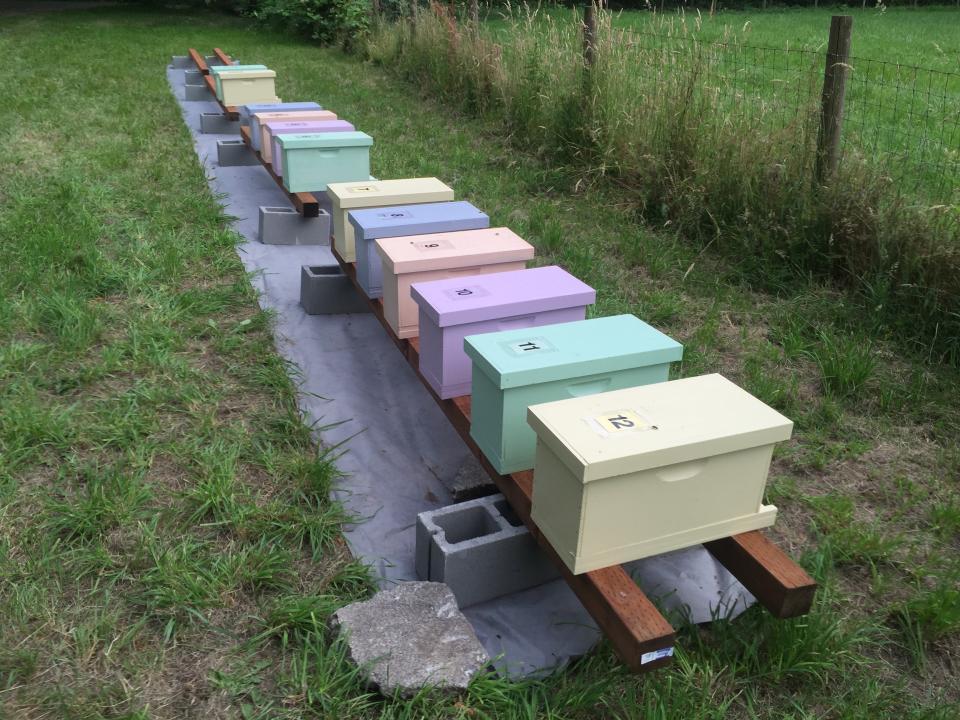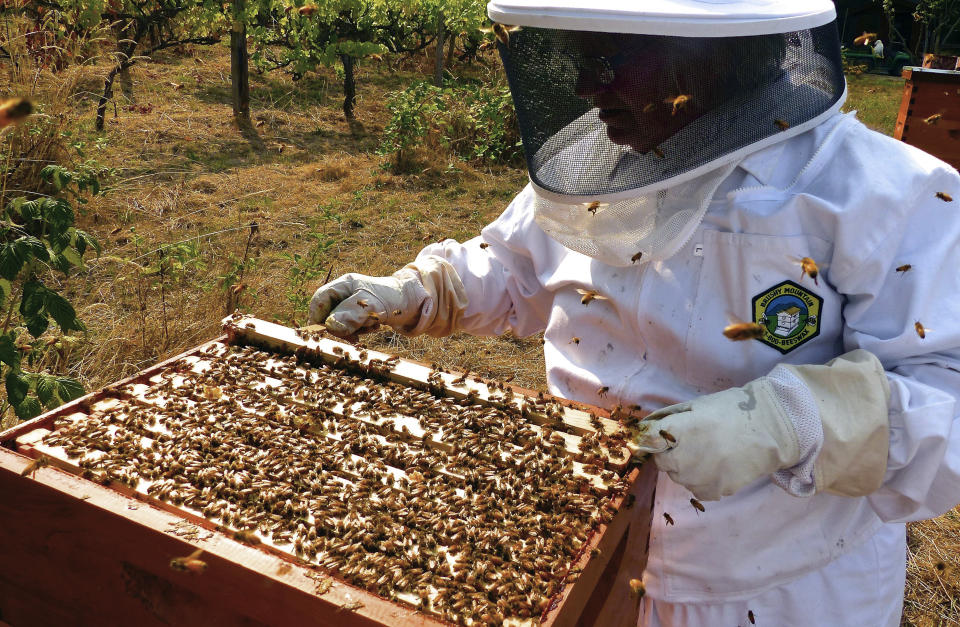Backyard gardeners can act to help bee populations
Chemicals are routinely applied around residential landscapes to kill insect pests and troublesome weeds, but many are indiscriminate and devastate pollinators in the process.
Over the past 30-plus years, pollinator populations have crashed worldwide due to a variety of reasons, including pesticide and herbicide exposure, invasive pests and diseases, loss of habitat, loss of species and genetic diversity, and a changing climate, scientists say.
Pesticide contamination of lawns, gardens and waterways is widespread, and even at sub-lethal levels can impact pollinators’ foraging ability and hive productivity.
``Honeybees are not the most impacted of pollinators,” said Katie Buckley, pollinator coordinator with the Washington State Department of Agriculture. ``Once-common butterfly and native bee species have become rare, with some on the verge of extinction.”
The rusty patched bumblebee, island marble butterfly, Taylor’s checkerspot butterfly and the familiar monarch butterfly were among those singled out by Buckley as greatly depleted.
Pesticides are over-applied by many backyard gardeners, said James Dill, a pest management specialist with University of Maine Extension.
``They don’t read the labels, or they eyeball the amounts,” Dill said. ``Sometimes, if maybe an ounce is called for, they’ll use 2 ounces. They often will use a calendar spray schedule or just spray because they had a problem in the past.”
But well-informed gardeners can be a big help in reversing the pollinator declines, especially those caused by chemical poisoning.
``In general, the best defense is to avoid spraying plants that are in bloom, use pesticides that have a short half-life when possible, and use pesticides with low toxicity to bees and other beneficial insects,” Buckley said. ``Whether as a farmer or a homeowner, it is critical to always read and follow the label.”
Clothianidin, dinotefuran, imidacloprid and thiamethoxam are highly toxic to honeybees by contact and ingestion, according to the Environmental Protection Agency’s toxicity classification scale for bees. Thiacloprid and acetamiprid are moderately toxic, the federal agency says.
If you keep bees, finding the right apiary location is an important way to reduce pesticide exposure.
``Keeping colonies as far away from commercial agriculture as possible (4 to 5 miles) is the safest,” Dill said. ``Drive around your area where you intend to keep hives and get the lay of the land so you know what you are dealing with. If you have a large, pesticide-free foraging area with diverse flowering plants nearby, that would be ideal.”
Supplying honeybees with uncontaminated water is also an effective deterrent, said Kevin Jensen, a pesticide management compliance investigator with the Washington State Department of Agriculture.
``If the bees do not have a water source in the apiary, they will be forced to look for water elsewhere during the hot months,” Jensen said. ``This can result in bees being attracted to an area that is being sprayed, even though that area may not have flowers blooming in it.”
Even pesticides allowed for use in organic agriculture can harm bees and other beneficial insects like flies, beetles, moths and wasps, entomologists say.
``Homeowners should avoid using pesticides in backyards and instead use nontoxic methods such as soapy water to get rid of pests such as aphids,” said Ramesh Sagili, an associate professor-apiculture with Oregon State University.
___
Online:
For more about pesticide toxicity, see this publication from Oregon State University Extension: https://catalog.extension.oregonstate.edu/sites/catalog/files/project/pdf/pnw591.pdf
You can contact Dean Fosdick at deanfosdick@netscape.net



